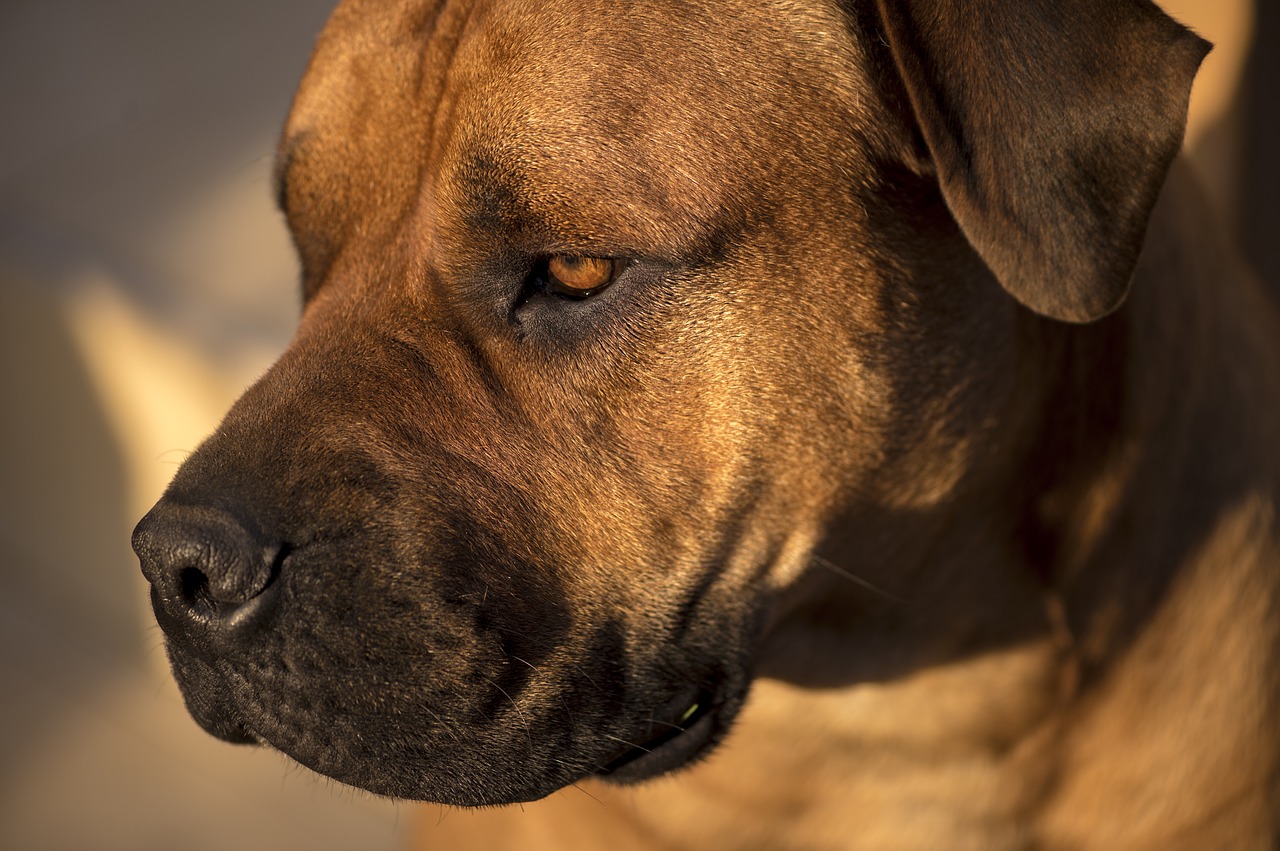 The Mastiff (also called ‘English Mastiff’ and ‘Old English Mastiff’) is not only considered as the world’s second largest dog breed but it is also one of the oldest of dog breeds. These giants originated in England and were brought to the mainland Europe by Caesar around 55 B.C. who noticed their courage as they fought alongside British men in war. Their powerful bodies and inherent courage made them very popular as guard dogs, war dogs, for bull baiting. There are accounts of Mastiffs also being used to fight human gladiators and lions in arenas. They later became popular with English peasants as guard dogs.
The Mastiff (also called ‘English Mastiff’ and ‘Old English Mastiff’) is not only considered as the world’s second largest dog breed but it is also one of the oldest of dog breeds. These giants originated in England and were brought to the mainland Europe by Caesar around 55 B.C. who noticed their courage as they fought alongside British men in war. Their powerful bodies and inherent courage made them very popular as guard dogs, war dogs, for bull baiting. There are accounts of Mastiffs also being used to fight human gladiators and lions in arenas. They later became popular with English peasants as guard dogs.
The modern Mastiff is bred to be a gentle giant and loves to be around his pack, i.e. family. They are protective of their family without being aggressive towards humans or other animals.
1. Description
Mastiffs are classified as a giant breed where standard height for males is 30 inches and they can weigh from 68 to 110 kg. Females are slightly smaller at 27.5 inches and weigh in from 55 to 78 kg. They have a large and well-knit frame. The neck is of medium length, slightly arched and very muscular. Both the Forequarters and hindquarters are powerful and muscular and the back is straight.
The head is massive with medium sized eyes set wide apart. The coat is coarse and of moderately short length. A mastiff’s coat colour can vary from fawn, brindle or apricot. With their muscular, symmetrical body and proud gait and the Mastiff gives the appearance of nobility and strength.
2. Temperament
The modern mastiff is very different from from their ancient predecessors. Over the years some of the more aggressive traits have been bred out of them. Altough, how an individual will turn out largely depends upon their upbringing, Mastiffs are usually an easy breed to live with because they are friendly, easy going and not very demanding as far as physical stimulation goes. Nonetheless, care should be taken as they are a powerful and hard to control physically. Mastiffs have a somewhat stubborn attitude and owners need to properly convey their ‘alpha’ status with them. Proper socialisation at an early age is required as is advisable with all large dogs. Mastiffs are somewhat difficult to train.
Mastiffs truly love their family and want to be around all members. This is not a breed to be kept outside or locked up! A properly socialized Mastiff will approach strangers in a friendly and dignified manner. Mastiffs have protective nature towards their pack and are known to insert themselves between their owners and any perceived danger. Families with small children need to be extra careful for the protection of their children and dogs alike. Boisterous children have been known to unintentionally hurt their mastiffs since the dog will allow them to handle him roughly without complaining. On the other hand mastiffs have been known to knock down children or scratch them unintentionally while playing with them.
Mastiff have a tendency to drool and snore loudly. Mastiffs are generally quite lazy and will be content to lie around the house most of the time.
3. Exercise requirements
Mastiffs are a laid back breed and don’t require a lot of exercise. One or two walks of about a 30 minutes daily should suffice. This is not a breed for jogging with as that can put a lot of strain on their joints.
4. Use as work dogs
While the breed was used for most of its history for guarding property and life, the modern Mastiff is mostly used as a household companion. Mastiffs can are are used for police and military work, search & rescue, watch dogs etc. However, many breeds are more naturally suitable for these kinds of fields than a mastiff. Unless the owner is willing to spend considerable time on training, this dog is not recommended for serious work duties.
4. Grooming
Mastiffs are average shredders. Their short coats are easy to groom with a firm bristle brush. Mastiffs drool quite a lot and their mouths need to be wiped regularly.
5. General Health
Mastiffs usually suffer from a variety of issues including hip dysplasia, elbow dysplasia, vaginal hyperplasia, ectropion, Bloat and gastric torsion. In case the dog requires medicine a mastiff can cost a lot since dosages are based on the dog’s weight.
6. Recommended for
Mastiffs are not suitable for living in cramped houses, people who cannot give time to their mastiff or anyone with a very active physical lifestyles. Mastiffs love to be around their owners and make ideal household companions when they are given proper obedience training.
